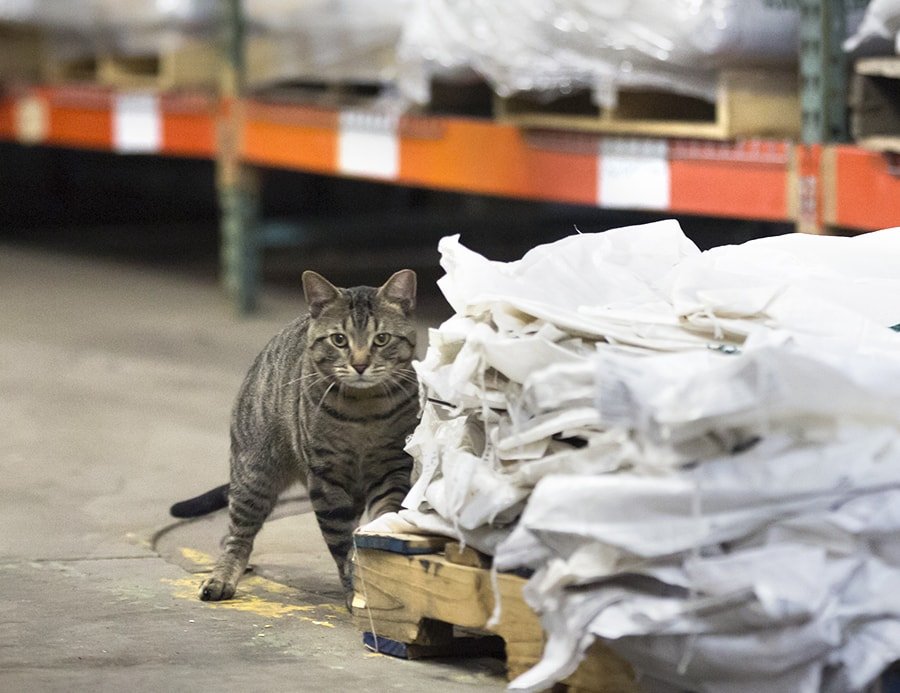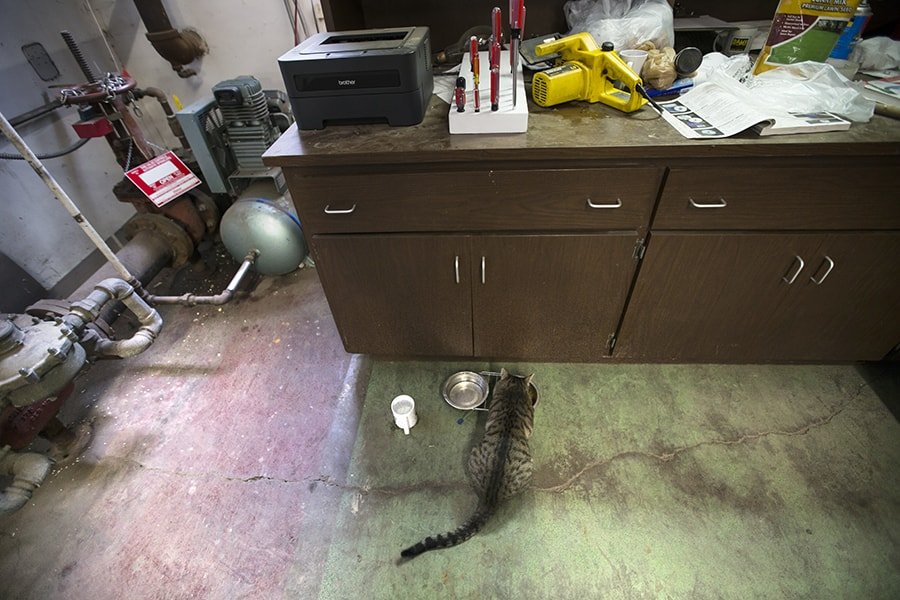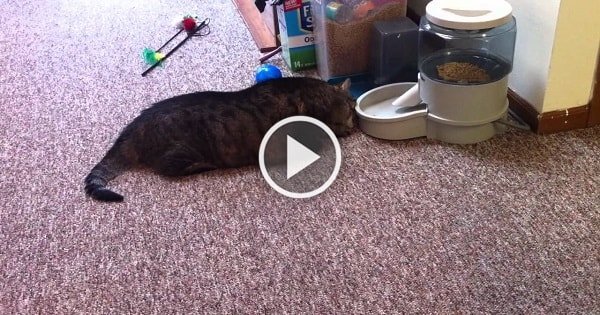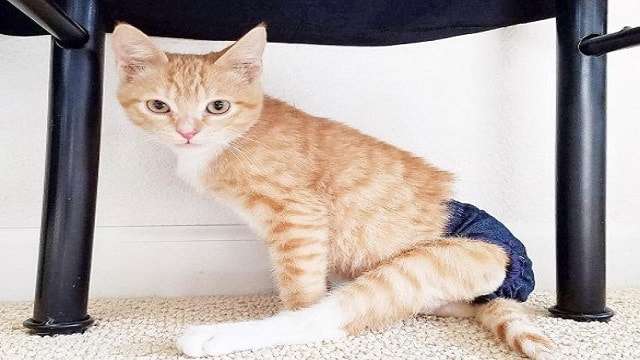MINNEAPOLIS, MINNESOTA – Jim Trenter was completely fed up with the mice chomping into grass seed bags at his business’ warehouse — until he heard about the new “working cat” program which is managed by the Animal Humane Society.
Despite the fact that “cats” and “working” rarely appear in the same any sentence anywhere, he adopted two felines. They now live and labor inside the warehouse, which has suddenly become … mouse-free.
“Best employees I have had!” joked Trenter, manager at Ramy Turf Products in St. Paul. “And you feel really good about it. You’re able to give a cat that might be euthanized a good place to live.”
That’s the very goal of this program, designed to find less conventional living arrangements — and a full-time job — for cats that aren’t a success on the adoption floor.
While cats have been marketed to barns for quite some time, targeting businesses and beyond is a brand new strategy taking root nationally, said Katie Lisnik, director of cat protection and policy for the Humane Society of the United States.
“I haven’t seen the broader use of working cats until about a year or two ago,” said Lisnik. “You guys [in Minnesota] are definitely at the leading edge.”
These cats aren’t the instant cuddle buddies most cat lovers desire. Some recoil from any human touch. Some don’t even use litter boxes regularly. Some are hissy and just plain cranky. But they’re otherwise healthy and could be a good match for hobby farms, warehouses and other kinds of homes and businesses interested in nontoxic, trap-free rodent control.
Plus, many even become sociable in stable settings over time, lending themselves to the “work” of business mascot and customer magnet, said Anne Lally-Rose, site manager at the Humane Society in Buffalo.
“I’d love to see them in bookstores, in fire stations, police stations, any kind of business,” said Lally-Rose, who helped spearhead the project. “There’s something kind of nifty about having an office cat around.”
How it all works
Twice a week, the Humane Society sends out an e-mail advertising specific cats on the job market to folks who express interest in hiring.
Trenter scrolled through some photos in February. He was losing up to $10,000 a year in seed and was in some serious need of a warehouse warrior. Two tabby cats looked up to the task.
Fritz and Nutmeg soon moved into their new home, which is a warehouse stacked with floor-to-ceiling grass seed and excellent hunting opportunities. Trenter provided food, water, litter box and also comfortable sleeping areas. After several weeks of getting adjusted, they went to work!
Fritz now struts proudly down the warehouse aisles and a dead mouse on the floor proof that he’s doing his job.
Nutmeg hides from all human visitors, but not from mice.
“The cats are terrific employees,” said Trenter. “They’re dependable. Never late for work. Require no training.”
“And they don’t talk back,” he laughed.
One surprise, though, is that Fritz is quite friendly. He rubs the legs of strangers and warehouse staff, who get a huge kick out of their newest co-worker. He’s become their little mascot.
“I’d recommend this program to anyone,” said Trenter.
Job options
Businessmen like Trenter would not have fit the Humane Society’s old preference for in-home housing for pets. With an out-of-home option available, new adopters are now stepping forward.
Jayne Griffith, an epidemiologist from Blaine, heard about the working cat program from one of her co-worker. She had a “mouse infestation” in her garage that was so bad, her box of Christmas ornaments showed signs of a nocturnal visitor, and it wasn’t Santa.
Griffith was quite concerned about diseases transmitted by rodent droppings, but had hesitated over adopting a cat because of her three dogs. With other living arrangements available, she adopted a cat named Belle, a petite calico, and set up a cat space in her garage.
“She worked out wonderfully,” said Griffith. “She patrols the garage, walks around. She has a perch on some shelving, so she can see any activity.”
Plus, she get to tell her friends, “I finally have an employee,” she joked.
But like Trenter, Griffith found Belle to be more than that. Belle became her feline friend. She purrs and she likes to be held. She even gets along with the dogs. So during the coldest winter months, Belle was lucky enough to wind up sleeping in the house.
“I’m a huge advocate of this program,” Griffith said.
Other employers have included hobby farmers such as Middie Ringer, of Medina, who adopted two feral cats to stand patrol her horse barn. Katie Ruggle recently adopted three cats that live in a heated space inside her barn outside Northfield.
Wanted: more employers
Nearly 70 little laborers have already been adopted since the working cats began as a pilot project last year, said Lally-Rose. Half were adopted since January, when it was launchedt. Only three have been returned.
That compares to more than 9,000 kitties who have found work-free homes during the past fiscal year.
The numbers point to a real need for more cat employers, the Humane Society says.
Lisnik, of the national Humane Society, says that the working cat program fills a hole in cat adoptions. Many shelters have been successful finding homes for more people-friendly cats and kittens. And nonprofits have sprung way up for feral cats.
“But cats that aren’t feral but have other “issues,” have been “our hardest population of cats,” said Lally-Rose.
“Typically these cats are referred to other rescue operations. And if they are not taken in, they are euthanized,” she said.
“Now, there’s an alternative,” she said.



















